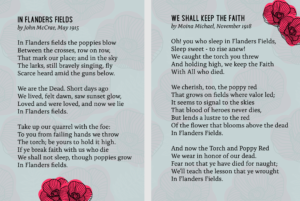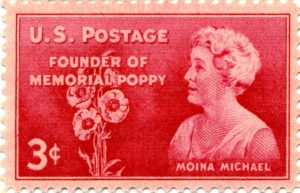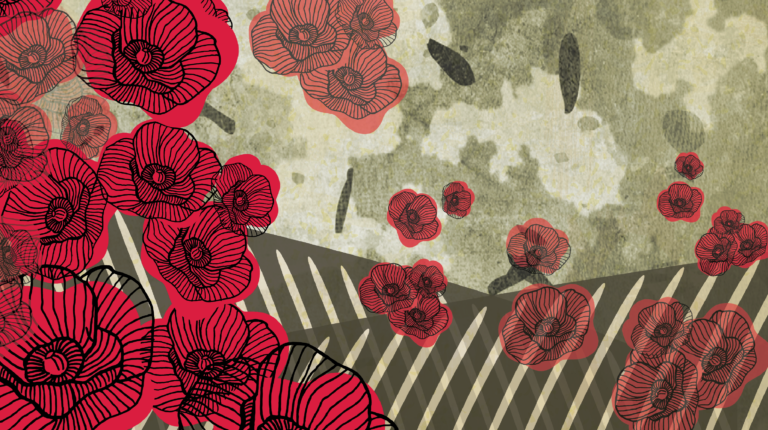American symbols come in many shapes, sizes, and forms – but one you may not be as familiar with is the red poppy. Although it is commonly associated with the British holiday, Remembrance Day, the international symbolic nature of the poppy, which memorializes fallen soldiers, got its start in the United States. Endearingly nicknamed and remembered as, “The Poppy Lady,” Moina Michael is responsible for popularizing the symbolism associated with the petite flower, and ultimately its ties to the American holiday, Memorial Day.
In 1918, Moina, a 48-year old University of Georgia professor, took a leave of absence to work with the YMCA Overseas War Workers in New York City. It was here that a solider offered her a magazine with a dog-eared page. Flipping to the creased page, she found a poem memorializing fallen soldiers in World War I, now titled, “In Flanders Fields.” The words contained poignant references to the red poppies growing out of newly dug soldiers’ graves in Europe.
 Utterly moved by the poem, Moina made it her mission to turn red poppies into a symbol of solider remembrance. Just two days before the armistice that ended WWI, she quickly penned a response to John McCrae’s poem, titled “We Shall Keep the Faith.”
Utterly moved by the poem, Moina made it her mission to turn red poppies into a symbol of solider remembrance. Just two days before the armistice that ended WWI, she quickly penned a response to John McCrae’s poem, titled “We Shall Keep the Faith.”
Determined to honor the sacrifice of others, Moina pledged to “always to wear a red poppy of Flanders Fields as a sign of remembrance and emblem of ‘keeping the faith with all who died.’” She promptly set out to local flower shops in search of red, silk poppies to distribute to businesses, veterans, and soldiers. To spread the message further, she launched a national letter-writing campaign encouraging others to adopt the poppy.
On September 27, 1920, the poppy became the official flower of The American Legion Family to memorialize the soldiers who fought and died during the war. It is this organization that brought National Poppy Day® to the United States by asking Congress to designate the Friday before Memorial Day for this holiday.
It wasn’t long before other countries adopted this idea. Remembrance poppies have been worn in the U.K., Australia, and Canada since 1921 and since 1922 in New Zealand.

Moina dedicated the rest of her career campaigning to have the red poppy recognized as an emblem by governments, veteran agencies, and the public. Her patriotism provides a moving symbol that continues to serve veterans and their families through both a visible reminder of those lost and the donations of proud supporters.
On May 24, join us in wearing a red poppy to honor the fallen and support the living who have worn our nation’s uniform.
About The American Legion Auxiliary Poppy
The Auxiliary adopted the poppy as its memorial flower in 1921 and in 1924, instituted the national Poppy Program to protect the memorial poppy from becoming commercialized and ensuring that every Auxiliary poppy is made by a disabled or hospitalized veteran. Each year, American Legion Auxiliary volunteers distribute more than 25 million red crepe paper poppies in exchange for contributions to assist disabled and hospitalized veterans. One hundred percent of the donations received by Auxiliary volunteers for poppies and contributions to the poppy fund are used exclusively to assist and support veterans and their families. In addition, poppy making provides disabled veterans with a rehabilitation activity and a small personal income. The physical and mental activity of poppy making provides therapeutic benefits for these veterans, and all poppy making materials are provided to them free of charge. The nearly 8,000 Auxiliary units distribute poppies, usually on Poppy Days or days of remembrance such as Memorial Day and Veterans Day.
